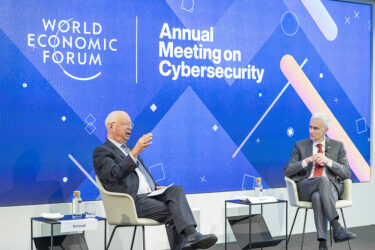If online content can be stored and distributed by peer-to-peer (P2P) blockchain technology, then the web could very quickly become a very different place.
Blockchain currently occupies a place in tech discourse similar to artificial intelligence, inasmuch as everyone knows it’s new and that it’s a big deal; but no one is really sure of how far it will take us, or in which direction.
Current article pitches in tech newsrooms around the world are laced with moments where a writer mentions something to do with blockchain or AI and an editor has already given the article the go-ahead before another word need be uttered.
Blockchain uses
The uses of blockchain currently being touted include P2P distribution of broadband connection, insurance models and voting systems – the situation is absurd to the point where currency, which blockchain was originally developed for, could reasonably be labeled blockchain’s most boring application.
With that said there is one application for blockchain which would result in something truly exciting and scary, in a way that only the internet can really be: Web 3.0.
Web 3.0 is not necessarily, as some originally thought, going to be based around intelligence, where your needs are served by clever algorithms, and information you didn’t realise you wanted is delivered to you without you realising it.
If web 2.0 was the phase of the internet defined by collaboration, folksonomies and social media, web 3.0 will be the phase where the internet isn’t merely used for those ideas, but is fundamentally built out of their underlying concepts. Blockchain is the means by which the internet can go from something where P2P happens, to being something which is, in and of itself, P2P.
How to P2P
The idea of the open internet hasn’t quite become a reality. The idea that anyone can communicate to anyone privately and freely, and that big corporations and individual users are leveled as equals, has not come true. The reason it hasn’t come true is servers. Servers exist to store the information that is the fabric of the internet, when you want to bring up a webpage your computer asks a server to provide it the information.
The existence of servers means that big telecoms companies and others, like Amazon and Google, who host much of the internet, can be the points at which the internet congeals and can be made to take the form the host wishes. If hackers want to take down the internet, as they did last year, then it is servers such as these that they target.
How to change this status quo seems, at least, like a mammoth task – and an inconceivable concept at most. But I’m not so sure. I think the answer might not appear forthcoming because it’s actually rather simple.
Read More: CIA ‘Siren Servers’ can predict social uprisings 3-5 days in advance
Content is the only thing which needs to go blockchain for the whole internet to become inherently P2P. I say “only” because there is a lot of it – anything for which mere perception of itself is the end goal. Anything you listen to, read or watch is content. Content is pretty much the entire internet, everything else – all the mess – exists in, around, and because of, content.
Content drives the internet
Content is how we take the internet from pseudo-open to actually open. From B2C to P2P. As Matej Michalko, founder and CEO of DECENT, put it recently, “disrupt[ing] the existing system […] will require harnessing the decentralizing nature of emerging blockchain content distribution technologies.” Excuse the business jargon, but he’s on the right track.
The difficulties shouldn’t be ignored, and they lie the path from here to there, evoking that characteristic of an epic conundrum: a simple idea which is difficult to achieve. Storing information on blockchain itself is difficult and limited, and can lead to an unstable system.
However, we’re currently using a system built for servers so judging it by a different standard should be done with lenience. We used to live in a world, for example, where a song would take a few minutes to download via a plugin internet connection, but it can now be streamed live over the LTE network.
The crux of the issue is this: if it’s beneficial for content to be hosted and distributed, not on the network (like now, with servers) but within the network (using blockchain), then the vast majority of the internet will be transferred to a P2P architecture. Blockchain doesn’t need multiple applications to change the world, it just needs to be applied to content – a move that would improve its independence, monetisation and censorship.
Web 3.0
This idea isn’t particularly new, as has been described before. Napster was essentially built on a P2P network. So in some ways we’d actually be going back to two-decade old technology, except with new technology. As with Napster, but in a more organised and genuine fashion, the network through which this content is distributed and accessed would be truly user-driven.
Currently, web content tends to be paid for in one of two ways. Either a company charges you a subscription, like Netflix, or they plaster your webpage with adverts, like newspapers. Advertising or subscriptions are the only options and since both involve going through an intermediary distributor, it means there’s both a middle man and a disincentive for micro-payments.
A blockchain platform would allow for tokenised, direct payments, and is already being tested, where users pay the producer directly for exactly what they consume.
This immediately makes the content more independent, because users don’t have the whims of a distribution channel to adhere to. Using blockchain a person can create something and target their own audience through the blockchain network in order to get the word out. A blockchain system would be your ability to consume content without having to second guess its purity of creation or distribution, nor the division of profits.
Censorship
Finally, is the question of censorship. While blockchain would mean that the centralised hubs of power had disappeared and thus taken their content rules with them, this would also complicate the policing of illegal content.
We could be more sure that we’d be able to see everything and that what we saw wasn’t edited by the editorial or distribution bent of the hub through which it was published. And while open internet-purists might like this idea, it would also make the control of sex trafficking, terrorist recruitment, and illicit substances more difficult.
These situations would have be be thought through more carefully. I am not of the opinion that “intelligent legislation” is a contradiction in terms, with internet companies currently all but policing themselves their methods could be applied in law once developed.
In any case, this is one of the biggest problems facing the internet now, and it would be in the world of Web 3.0, so the worst case scenario is we’d be no further forward on this point but a lot further on every other.












